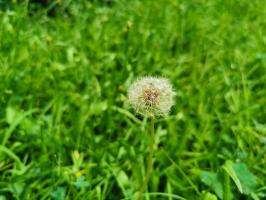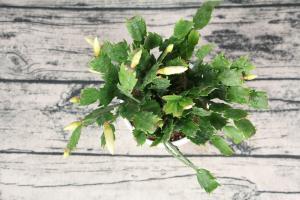How to Propagate a Rubber Tree Plant
Propagating a rubber tree plant is a great way to share the beauty and benefits of this popular houseplant with others. Fortunately, it's also a relatively easy process that can be accomplished in a few different ways. Here's what you need to know to get started.
Method 1: Propagating with Stem Cuttings
One of the most common ways to propagate a rubber tree plant is by taking a stem cutting. Here's how to do it:
Choose a healthy stem from the rubber tree plant that is at least 6 inches long and has a few leaves near the top.
Cut the stem at a 45-degree angle with a clean, sharp pair of pruning shears or a knife.
Remove any leaves from the bottom half of the stem.
Dip the cut end of the stem in rooting hormone powder or gel.
Plant the stem in a pot filled with moist potting mix, keeping the bottom half of the stem buried in the soil.
Cover the pot with a plastic bag or dome to create a humid environment for the cutting.
Place the pot in a bright, warm location away from direct sunlight.
Maintain moist soil and high humidity levels by misting the cutting regularly and keeping the cover in place.
After several weeks, the cutting should begin to grow roots and new foliage.
Method 2: Propagating from Air Layering
Another way to propagate a rubber tree plant is by air layering, which involves creating a new plant from an existing one without cutting it completely. Here's how:
Choose a healthy stem from the rubber tree plant that is at least 12 inches long and has a few leaves near the top.
Make a small cut around the stem about a third of the way down its length.
Cover the cut with moist sphagnum moss or vermiculite, and wrap it with plastic wrap to secure it in place.
Keep the moss or vermiculite moist and the plastic wrap in place for several weeks, until roots begin to grow from the cut area.
Cut the newly rooted stem from the original plant and plant it in a pot filled with moist potting mix.
Place the pot in a bright, warm location away from direct sunlight.
Maintain moist soil and high humidity levels by misting the new plant regularly.
Method 3: Propagating from Seeds
While it's possible to propagate a rubber tree plant from seeds, it's a much more time-consuming and uncertain process than using stem cuttings or air layering. Here's what you need to know:
Collect seeds from a mature rubber tree plant, once the fruit has fully ripened and turned brownish-red.
Clean the seeds and soak them in water for several hours.
Plant the seeds in a pot filled with moist potting mix, burying them about an inch deep.
Keep the soil moist and the pot in a warm, bright location with indirect sunlight.
It may take several weeks or even months for the seeds to germinate.
Once the seedlings develop several leaves, transplant them into larger pots with well-draining soil mix.
Care for the young plants as you would for mature rubber tree plants, including regular watering and feeding.
With these methods, you should be able to successfully propagate rubber tree plants and enjoy their beauty and health benefits in many different locations.

 how many times do yo...
how many times do yo... how many planted tre...
how many planted tre... how many pine trees ...
how many pine trees ... how many pecan trees...
how many pecan trees... how many plants comp...
how many plants comp... how many plants can ...
how many plants can ... how many plants and ...
how many plants and ... how many pepper plan...
how many pepper plan...
































